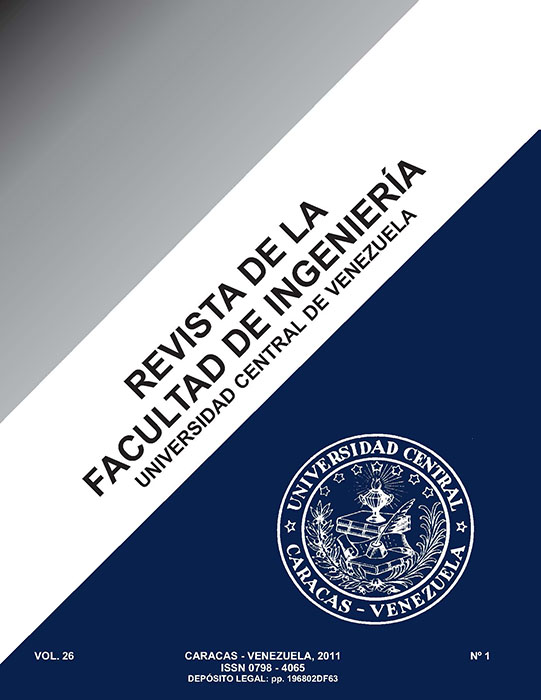DIFERENCIAS ESTADÍSTICAS ENTRE LOS MODELOS DE DISTRIBUCIONES DE POROS A PARTIR DE LA CURVA DE RECHAZO DE LAS MEMBRANAS DE ULTRAFILTRACIÓ / Statistical Differences Among Pore Distribution Models Obtained from Rejection Profile of Ultrafitration Membranes
Palabras clave:
Ultrafiltración, Curva de rechazo, Distribución efectiva de poros, Tamaño promedio efectivo de poro, Coeficiente promedio de filtrado.Resumen
La distribución efectiva de poros de las membranas de ultrafiltración, se obtiene a partir de datos experimentales de curvas de rechazo de diferentes tipos de membranas y solutos. Para ello, se adopta un modelo hydrodinámico de transporte y se comparan diferentes modelos estándares de densidad de probabilidad para describir la distribución efectiva de poros. Los modelos probabilísticos escogidos son Gamma, Log-normal y Weibull, por ser sesgados a la derecha. Con el algoritmo robusto de Levenberg-Marquardt para regresión no lineal, implementado en la subrutina lsqcurvefit de Matlab®, se obtienen los parámetros optimizados de dichos modelos probabilísticos. Los intervalos de 95% confianza para los parámetros optimizados, se obtienen de la subrutina nlparci de Matlab. El análisis de varianza (ANOVA) se usa para probar el efecto del modelo de densidad de probabilidad en la predicción de los momentos centrales que caracterizan la distribución efectiva de poros, el coeficiente promedio de filtrado y el flujo promedio de agua. Con diferencias estadísticamente significativas de un 5 a 10%, el análisis (ANOVA) de dos vías y el de una vía indicaron que existe una diferencia relacionada con el modelo probabilístico escogido para predecir del tamaño promedio efectivo de poros y el coeficientes promedio de filtrado.
ABSTRACT
The effective pore size distribution of ultrafiltration membranes’ is obtained from the experimental rejection profile of different types of membranes and solutes. For this, the hydrodynamic transport model is assumed and different standards probability density functions are compared to describe the effective pore size distribution. The chosen probabilistic models are the gamma, log-normal and Weibull, because they are skewed to the right. The robust Levenberg-Marquardt algorithm for non-linear regression as implemented in Matlab® lsqcurvefit subroutine is used to provide the optimized parameters. The 95% confidence intervals for the optimized parameters are obtained from nlparci subroutine in Matlab®. The analysis of variance (ANOVA) is used to test the effects of the probability distribution model in the prediction of the central moments, the average sieving coefficient and the average water flux. With statistical significant differences between 5 and 10%, the two-way and one-way (ANOVA) analysis, indicated that the chosen probabilistic model introduced a significant difference in the predictions of the effective average pore size, and the average sieving coefficient.
Keywords: Ultrafiltration, Rejection profile, Effective pores size distribution, Average effective pore size, Average sieving coefficients.





